Making salad dressing from scratch doesn’t need to be complicated. Learn the basic formula behind making great tasting vinaigrettes and never buy salad dressing from the store again!
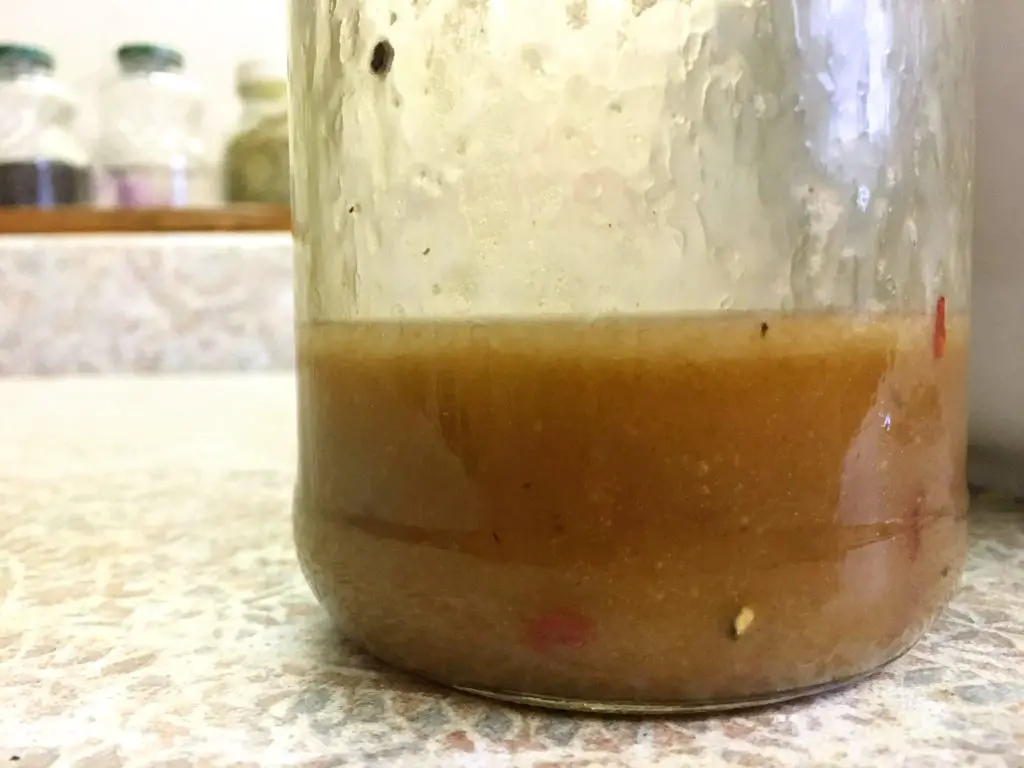
A SHORT LESSON IN READING LABELS
Do you remember the last time you studied the label of a commercial salad dressing?
One of my favourite salad dressings when I was a kid was a zesty Italian dressing made by a major player in the consumer packaged goods industry.
Do you want to take a look at some of the ingredients?
Soybean and canola oils (ask me another day why those aren't good for you)Xanthan gum, a thickening agent which appears safe, but may lead to digestive problems if consumed in large quantities. It is pervasive in the food and cosmetics industries, and is also a common ingredient in paints, adhesives, and pesticides.Potassium sorbate, which "maintains quality", butmay also lead to allergiesif consumed in large quantitiesCalcium disodium EDTAto "maintain flavour". In other words, it's a food preservative. It's also used in prescription medications and in eye drops. How appetizing!Monoglyceridesto prevent oil separation (an emulsifier). Do you know what monoglycerides are? Trans fats. You know, the kind of fats that increase your chances of stroke and heart disease.
Of course, when you’re reading that label, you don’t know what any of these things are and what they mean for your body. What pops out are the good ingredients, like vinegar, garlic, red bell peppers and onions. The alternative is shelling out more money for something with higher quality ingredients, but there’s a better way.
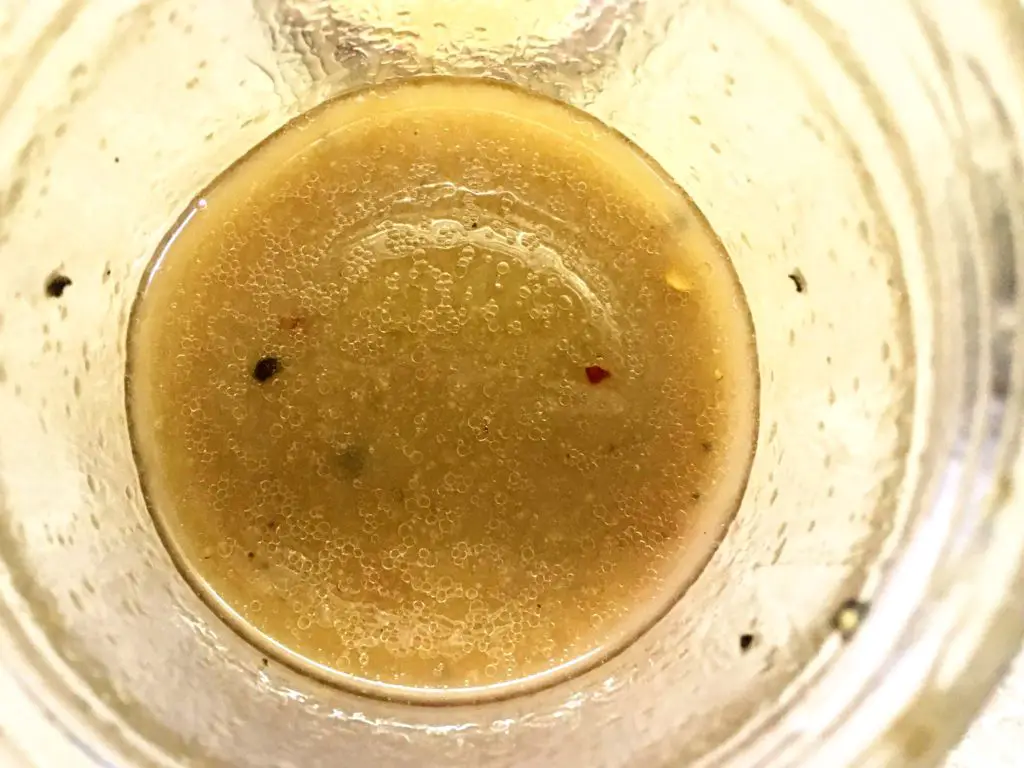
This post contains affiliate links, meaning that if you choose to purchase something after clicking on one of the links in this post, I may earn a small commission at no additional cost to you.
WHAT’S THE FORMULA BEHIND HOMEMADE VIINAIGRETTE?
My favourite part about making my own vinaigrettes from scratch is that I can play and experiment with my dressings.
Once you know the formula you can swap out one type of an oil for another, try out funky vinegars, and fiddle with the other modifiers.
Now, this might sound a little bizarre, but I measure out my ingredients with a shot glass.
Yes, you read that right.
This gives me half a cup of dressing, which is usually the perfect amount for my use. Sometimes I use all of it, but more often than not, I have leftover dressing that I can use over the next few weeks. Are you ready?
THE RATIOS
Three parts oil to one part acid.
If you forget everything else, as long as you remember this part of the formula, you’ll pull it off. To illustrate this, whenever I’m making salad dressing from scratch, I’ll measure out three shot glasses of oil and one shot glass of the acid I’m using.
Easy, right?
After that, it’s one teaspoon of mustard (assuming you follow the shot glass method); one teaspoon of your preferred sweetener; your flavourings; and salt and pepper to taste.
THE OIL
When selecting an oil, it’s important to pick something that fits the theme of your salad.
If you want a dressing for a tomato basil salad, or want to make your own healthy version of an Italian dressing, olive oil is a great choice.
If you’re aiming for a vinaigrette that’s more Asian inspired, you’ll want to include a bit of sesame oil in your oil measurement for that classic flavour.
My all-time favourite for vinaigrettes is avocado oil. It’s such a light tasting and inoffensive oil, that I use it for almost everything.
THE ACID
Do you want a vinegar or citrus in your dressing?
Again, it depends on what you’re trying to achieve with your dressing.
A classic option for a basic vinaigrette is red wine vinegar or lemon juice, but there are so many to choose from.
Here are some ideas to get your creative lightbulb flashing:
White wine vinegarApple cider vinegarTarragon vinegarSeasoned vinegar dressing(I love this stuff)Lime juice
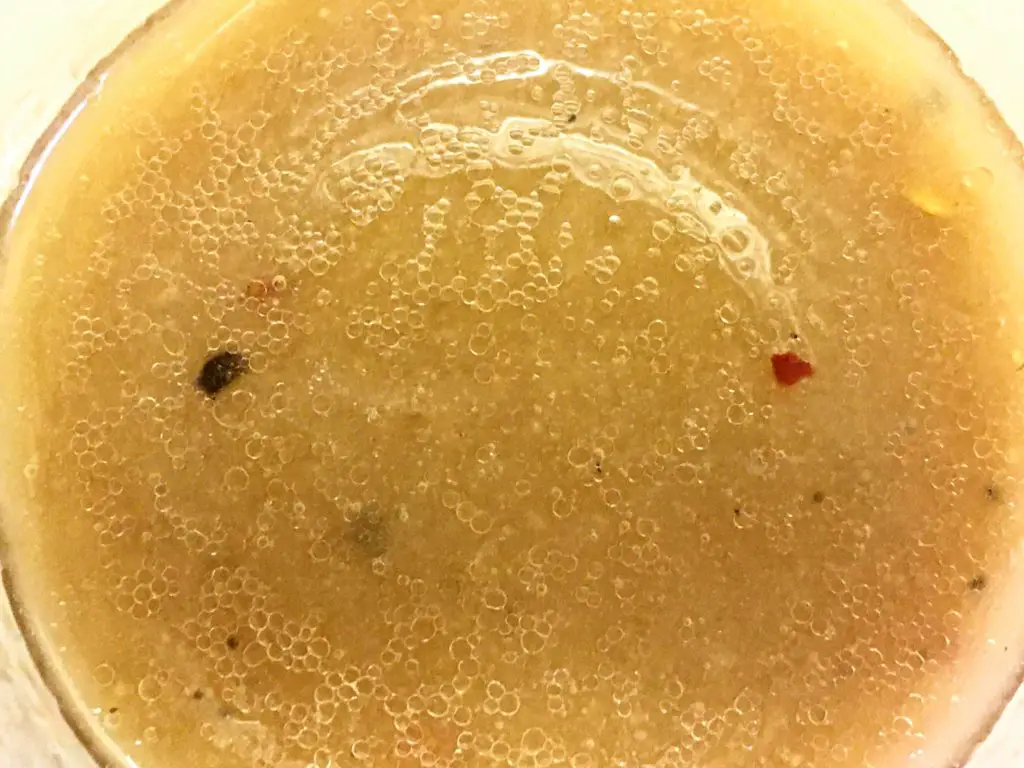
MUSTARD
As you will notice in my recipe for an Asian inspired vinaigrette below, I don’t use any mustard because it wouldn’t have fit the flavour profile I wanted.
It’s the outlier, because almost every vinaigrette I make has mustard.
It may be a surprise to hear that mustard is an emulsifier, meaning, it will make everything more cohesive.
I’m not a chemist, but I’m pretty sure mustard makes the proper introductions to the oil and acid molecules so that everyone has fun at the vinaigrette party.
In mayonnaise, egg yolk is the emulsifying ingredient that turns oil and acid into the spread we know and love.
SWEETEN IT UP
When making vinaigrettes from scratch, I typically start with one teaspoon of sweetener and go from there.
In my opinion, the most important kitchen rule is to taste whatever you’re making so you can adjust the seasonings as needed.
The same rule applies here.
I usually bounce between honey and maple syrup, but agave nectar works well too. What would you use?
HERBS, SPICES, AND FLAVOURINGS
This is where things get fun in the formula, because the sky’s the limit!
Salt and pepper should be added to taste.
If you’re not sure how much to add, begin with a 1/4 teaspoon of salt and a 1/8 teaspoon of pepper and go from there. After all, it’s easier to correct something that’s under-seasoned than over seasoned.
Here are some of my favourite additions when I’m making vinaigrettes from scratch:
Fresh or dry herbs, especiallyherbes de provence, parsley, lemon thyme, andsummer savoryMinced chives or a shallotFresh garlic, finely minced or passed through agarlic press. Just note that it's best to use the vinaigrette the day it's made as the garlic flavour increases in potency the longer it sits.A handful of raspberries for a fruity vinaigrette.Chili pepper flakes.
If you need additional inspiration, The Flavour Bible by Karen Page and Andrew Dornenburg is a wonderful resource. You can check out my review of the Flavor Bible, along with my other favourite kitchen reference books.
MIXING IT UP
I swear by putting all of the ingredients in a recycled glass jar and shaking it vigorously. It makes the least amount of dishes and if there’s extra, it’s already in a container.
The con?
You will need to shake it up every time you use it.
The alternative is running it through a blender, like a Magic Bullet, or mixing it up with an immersion hand blender. This method thickens everything and makes the vinaigrette almost creamy. It’s also less likely to separate. The call is yours!
SHOP THIS POST
OTHER POSTS YOU MIGHT LIKE
Roasted beet salad with an orange vinaigrette
Shredded salad with a spicy oil-free peanut dressing
A crash course in making pasta salad with a recipe for a classic vinaigrette
Peppery arugula salad with seared duck breast
ASIAN INSPIRED VINAIGRETTE RECIPE
2.5oz avocado oil
1/2oz sesame oil
1 oz rice vinegar
1 tsp hoisin sauce
1/4 tsp garlic powder
pinch of chili pepper flakes
salt and pepper to taste
PRINTABLE ASIAN INSPIRED VINAIGRETTE RECIPE CARD
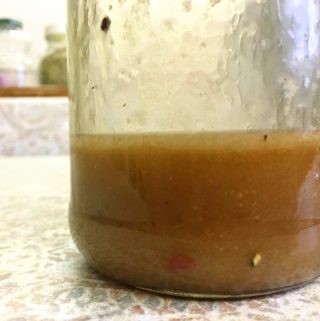
Asian Inspired Vinaigrette
Ingredients
- 2.5 oz avocado oil
- 1/2 oz sesame oil
- 1 oz rice vinegar
- 1 tsp hoisin sauce
- 1/4 tsp garlic powder
- pinch of chili pepper flakes
- salt and pepper to taste
Instructions
- Add all of the ingredients into a glass jar.
- Close the jar, shake well, and serve.
Video
Notes
- This dressing can be blended instead of shaken.
- Make sure to shake well before using, as it’s normal for the oil and vinegar to separate as there’s nothing to bind these ingredients together.
- Store it for up to 1 month in the refrigerator.
PIN IT FOR LATER
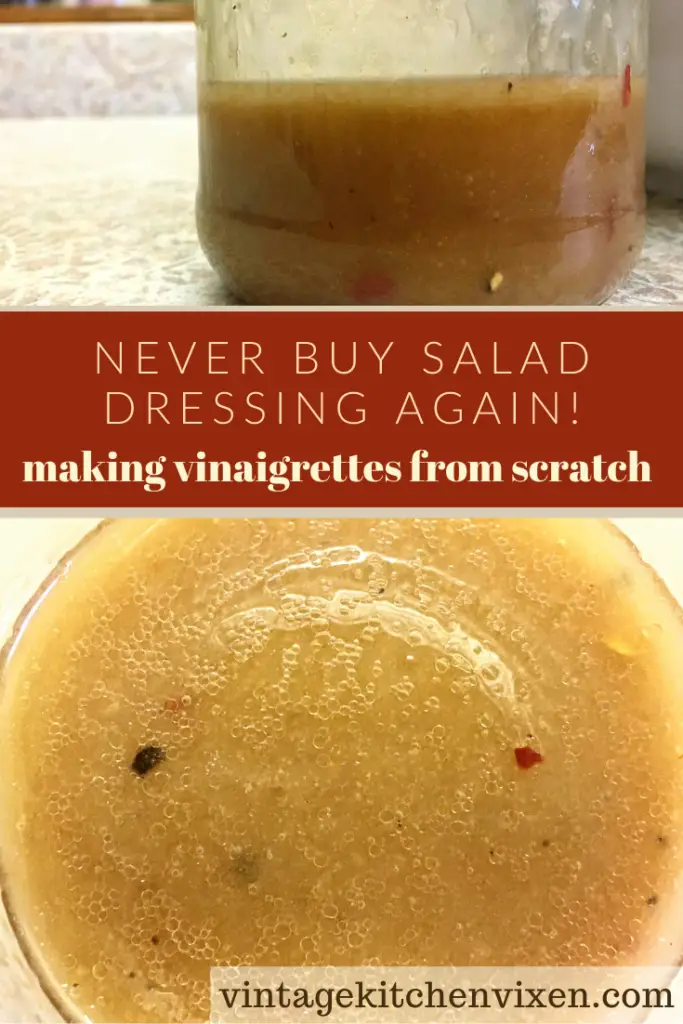
Love and gratitude,


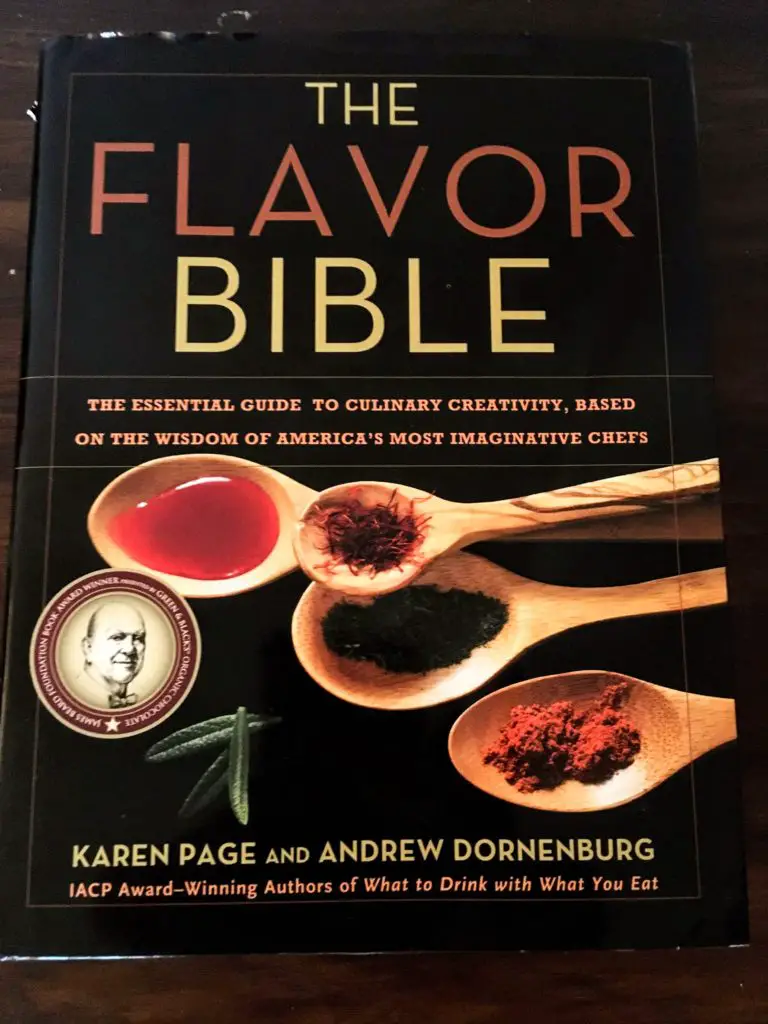

Love this! Tarragon vinegar? That sounds delicious. This is a read! Great information. I will definitely read again. ❤️ Sharing on my feed. Thank you!!
You are a darling, Jersey, thank you! Tarragon vinegar is a favourite of mine. It’s basically a white wine vinegar infused with tarragon, so you could probably make it yourself if you can’t get your hands on a bottle.
Commercial salad dressings are frightening! I’ve been making my own for a long time, but you’ve given me all sorts of ideas for new flavors to try! Thank you!
I’m so glad to hear it, Marisa! So glad I could give you some ideas to experiment with 🙂
Ohh these look so good! Seems perfect for salad or marinade and something I’ll definitely try!
I didn’t even mention anything about marinades, but you’re absolutely right!
Wowzers! This was insightful! A friend of mine recently returned from France and one of the fascinating things she mentioned was how their ingredients labels were so simple. Like with jams and jellies the labels just red (strawberries and sugar… THAT’S IT!
Thanks for this!
Awe, thank you so much, Dana! I’m glad you found my post useful 🙂 Labels with simple ingredients make me incredibly happy. That’s the way they should be!
Great tips! I love the asian dressing recipe! Will have to file that one for later. 😉
I hope you love it as much as I do, Susan!
This looks delicious!
Thanks Amanda!